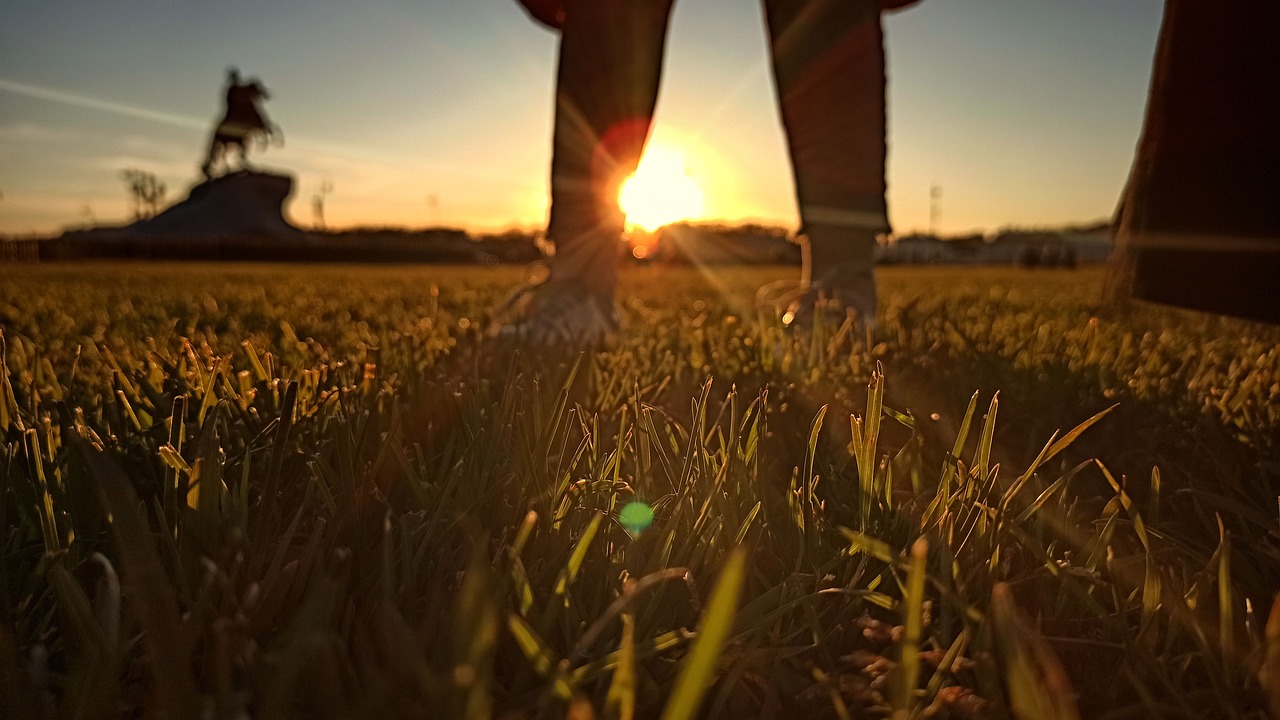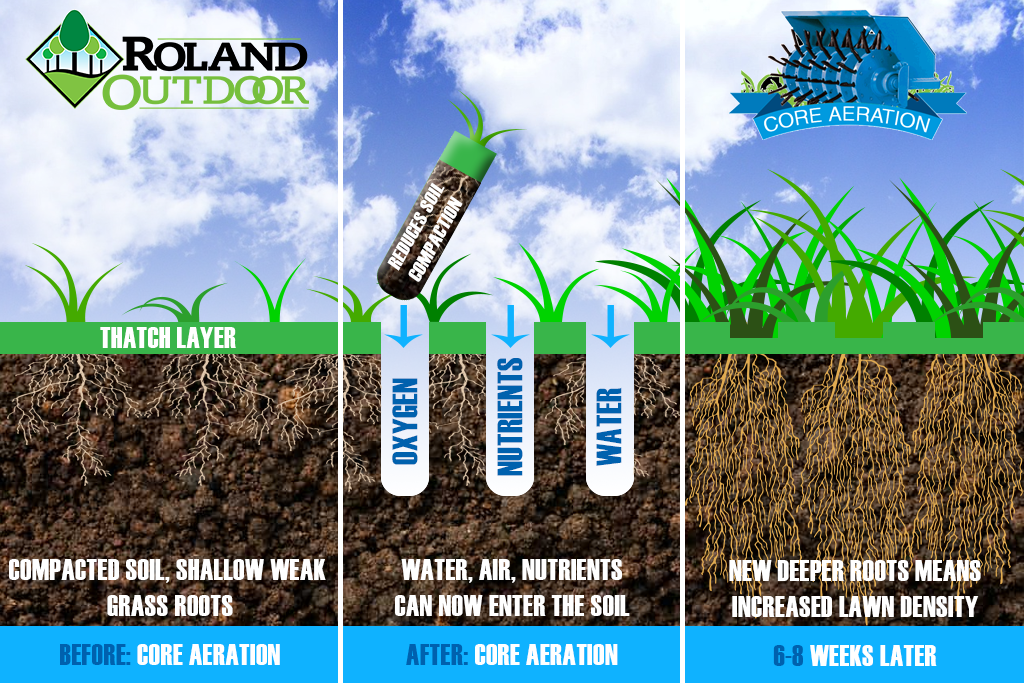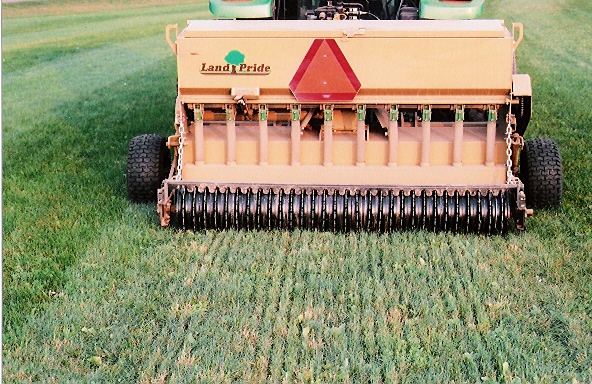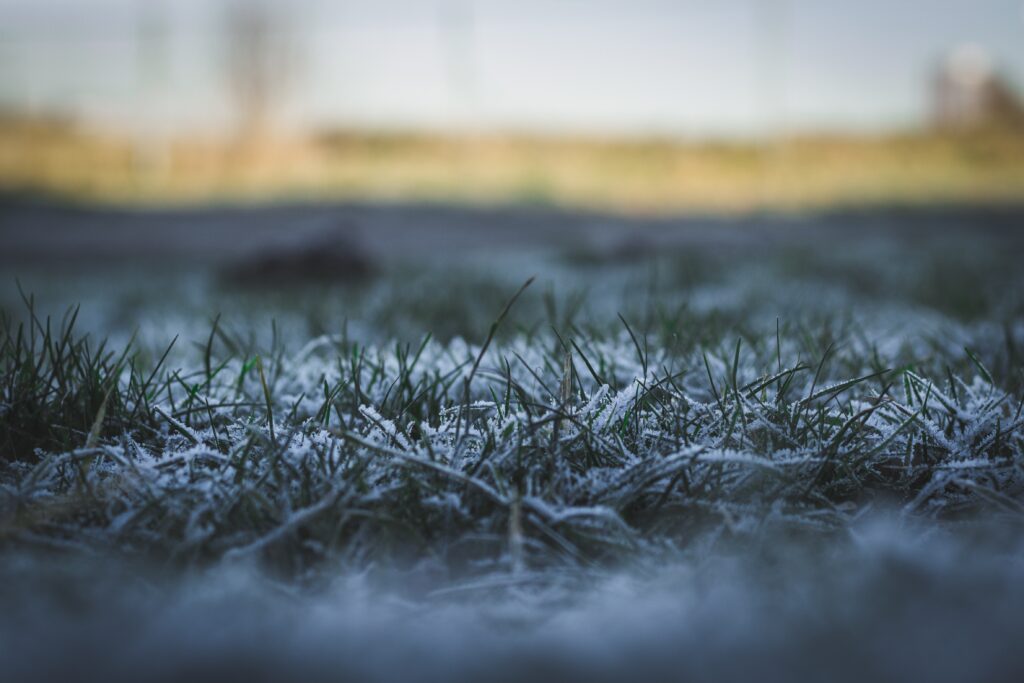
BLOG
Core Aeration

One of the single best things you can do to improve the overall health and appearance of your lawn is core aeration.
This is the process by which small soil plugs, typically 3-6 inches long, are removed from your lawn by the use of a machine called a core aerator.
The main benefit of performing this procedure is to alleviate soil compaction, a common problem due to the high clay content of our regional native soil.
Soil compaction is a major cause of turf decline because it impedes turf root growth and development. This results in lawn thinning and deterioration and the promotion of weed growth.
Core aeration will improve the health and appearance of your lawn by:
Improving turf root growth and development.
Increasing soil microbial activity to help decompose thatch.
Increasing water, nutrient and oxygen availability to the turf roots to give it a competitive advantage over weeds.
Early fall is an excellent time of year to aerate your lawn. Take advantage of the turf’s natural shift of its resources from top growth to root growth, during this season.
A healthy lawn starts with a healthy root system, we recommend annual aeration for best turf results. Seeding and fertilization can also be done in conjunction with core aeration.
Read more about Core Aeration with Overseeding.
Watering grass & grass seed (DO’S and Don’ts)

Watering can make or break your newly seeded lawn.
You spent a lot of money and time getting your grass seed in the ground. Now let’s make sure that you get what you desire. This newsletter is to inform you of proper watering practices on turf grass from seed to full germination.
Home owners watering:
Most modern homes have an annual output of water out of a hose port of 16-20 gallons of water per hour. Turf grasses from seed require an annual rate of ⅛ of inch of water per sq. ft. under ideal conditions. once turf grasses establish after seeding on an average only need about a 1/10 of an in water annually to survive under ideal conditions. So what does this mean.
Proper watering on turf grass:
For Newly seeded lawns we recommend water with a (rotary, fan, full, spot) sprinkler. 3 times a week for 15 to 20 minutes per area that placing the sprinkler can cover at one time. With a large seeded area you will have to move your sprinkler around to get even coverage of water across the whole seeded area, at the 15 -20 minutes of watering; 3 times a week per area placed. After watering you should not have areas of standing watering or if you do. Puddles should not persist for very long after watering. Always water during the morning, until about mid day. To allow water to drain down into the soil allowing the turf to dry before evening. This reduce the chances of funguses and insects infesting/hosting in your lawn. Once turf grasses establish you can decrease the number of time you water per week but increase the amount of time you water. So you will be watering 20-25 minutes 2 times week. Then once turf is fully established recommend water the whole lawn once a week for a about 30 minutes depending on rainfall amounts.
Improper watering on turf grass:
We see a lot of improper watering every year. Improperly watering your lawn can do as a lot of unnecessary damage and put you back at square one. Watering your lawn to the point of beyond saturation is a bad idea. Turf grasses are not hydroponic they do not live in overly watered soils; Over watering can cause lots of problems. Problems include; severe funguses, fungal rots, and also cause shallow root systems. When a turf grass develops shallow root system due to over watering. This turf becomes what called hydro-dependent, meaning that in the turf doesn’t have constant water, it dies! Over watering also gives weeds like crabgrass and dandelion an open invitation to infest your lawn.
We still have a hard time understanding the people that think they don’t have to water new grass seed at all and it’s going to magically get water and grow…..? Watering grass seed is vital for germination to be successful. Under or non watered turf normally comes in spotty due to select pieces of turf grasses taking the available moisture from other areas of the seeded area. Under-watering normally ends in turf grass dying prematurely or allowing excessive weeds to come in and choke out the turf do to available water competition.
For more information please contact our office at (573)-(221-2717).
The In’s and Out’s of Seeding Turf Grasses

We get asked a lot by our customers, what’s best time to seed their lawn? Spring or Fall.
The 2 best times to seed your lawn during the year. First is early, early spring, mid February through mid march. Second and best timing mid august through mid October.
Seeding in the spring can be effective but is tricky and normally requires more work on the homeowners behalf then in seeding in the fall months. Fall seeding normally requires less work and is twice as effective for quality turf grass stands.
Spring Vs. Fall Seeding
| Season | Time frame | Weeds | Soil temp | Watering | External stresses | Pesticide controls |
| Spring Seeding | Mid Feb – Mid Mar Short optimal window for seeding | Winter weeds and crabgrass beginning to germinate causing weed problems down the line | Too cold, varying, day to day to keep turf grass growing at constant rate | Necessary for strong stands before summer stresses take hold | New seed could be damaged easily due getting to hot or too cold | Pre-emergent products applied in late march, which can inoculate grass seed |
| Fall Seeding | Mid Aug – Mid Oct Longest optimal window for seeding | Summer weed are dying back. Controls may have already been applied | Perfect day and night time conditions. Allowing constant growth rate | Necessary to get roots to establish before winter. Winter snows provide water, using less water then the spring seeding | Commonly none, temp stay average and funguses don’t commonly exist this time of year | None |
At Roland Outdoor we believe fall seeding gives you the best conditions for a proper healthy stand of turf grass. Spring seeding will work but there are lots of factors working against spring seeding as you saw in the chart. Most spring seeding end up requiring a fall seeding after the first season. Due to the different external stresses brought on by the summer months. In the 20 plus years of Roland Outdoor doing seeding, Best results have come from fall seeding.
Save Money With LED Landscape Lighting

Everybody likes to save money right, well most everybody and we all know that saving energy is good for the environment. Well with LED landscape lighting you will save money and do your part for a cleaner environment.
Here is a simple example and comparison of Halogen vs LED Landscape Lighting.
Halogen System operating at 8 Hours per Night X 1000 Watts Consumed X .14¢ kWh ÷ 1000 =$1.12 per night or $408.80 per year
LED System operating at 8 Hours per Night X 250 Watts Consumed X .14¢ kWh ÷ 1000 = .28¢ per night or $102.2 per year
A Savings of $306.60 per year on Energy Cost alone with LED’s
If you you are considering a landscape lighting system, the new LED’s are a great option. If you currently have a halogen system we can retro fit your system with a LED’s, your love them.
Garden Tips

- Some plants are sensitive to the fluorine and chlorine in tap water. Water containers should stand overnight to allow these gases to dissipate before using on plants.
- Wash the dust off of houseplant leaves on a regular basis. This allows the leaves to gather light more efficiently and will result in better growth.
- Set the pots of humidity-loving houseplants on trays filled with pebbles and water. Pots should sit on the pebbles, not in the water.
- Allow tap water to warm to room temperature before using on houseplants.
- Fluffy, white mealy bugs on houseplants are easily killed by touching them with a cotton swab soaked in rubbing alcohol.
- Insecticidal soap sprays can be safely applied to most houseplants for the control of many insect pests.
- Amaryllis aftercare: Remove spent flower after blooming. Set the plant in a bright sunny window to allow the leaves to fully develop. Keep the soil evenly moist, not soggy. Fertilize occasionally with a general purpose houseplant formulation.
- Gently brush off heavy snows from tree and shrub branches.
- Limbs damaged by ice or snow should be pruned off promptly to prevent bark from tearing.
- Check stored summer bulbs such as dahlias, cannas and gladioli to be sure they are not rotting or drying out.
- To reduce injury, allow ice to melt naturally from plants. Attempting to remove ice may damage plants further.
- Use sand, bird seed, sawdust or vermiculite to gain traction on icy paths. Avoid salt or ice melting chemicals as these may injure plants.
- Make an inventory of the plants in your home landscape. Note their location and past performance. Plan changes on paper now.
- Sow pansy seeds indoors now.
- Avoid foot traffic on frozen lawns as this may injure turf grasses.
- Make a resolution to keep records of your garden this year.
- Store wood ashes in sealed, fireproof containers. Apply a dusting around lilacs, baby’s breath, asters, lilies and roses in spring. Do not apply to acid-loving plants. Excess ashes may be composted.
- Check all fruit trees for evidence of rodent injury to bark. Use baits or traps where necessary.
- Cakes of suet hung in trees will attract insect-hunting woodpeckers to your garden.
- Brightly colored paints applied to the handles of tools will make them easier to locate in the garden.
- Seed and nursery catalogs arrive. While reviewing garden catalogs, look for plants with improved insect, disease and drought-tolerance.
- Old Christmas trees can be recycled outdoors as a feeding station for birds. String garlands of peanuts, popcorn, cranberries, fruits and suet through their boughs.
- Christmas tree boughs can be used to mulch garden perennials.
- If you didn’t get your bulbs planted before the ground froze, plant them immediately in individual peat pots and place the pots in flats. Set them outside where it is cold and bury the bulbs under thick blankets of leaves. Transplant them into the garden any time weather permits.
- Try sprouting a test sample of left over seeds before ordering new seeds for spring. (Roll up 10 seeds in a damp paper towel. Keep moist and warm. Check for germination in a week. If fewer than half sprout, order fresh seed.)
From our Friends at the Missouri Botanical Gardens
Slice Seeding
When lawn renovation is needed, slice seeding can often solve the problem, easily and with little mess.
What is Slice Seeding?
Slice seeding is the quickest and most effective way of reseeding existing lawns that are thin or have bare spots. Slice seeding is accomplished with a special machine that has rotating vertical knives that slice through the soil and injects the new seed into the soil. Slice seeding is a very clean, efficient way of renovating your lawn.

Water, Water, Water
Slice seeding is similar to primary seeding when it comes to a germination. Germination is only successful with proper watering. The soil will need to be kept moist before, during and after germination for best results.
FROST TIPS

When you read the word FROST, what comes to mind? Cold, ice, shivering, freezing? Well, the trees, shrubs, turf, and perennials in your landscape think so too. This segment is about what frost is and the damage that it can cause in early spring.
What is Frost, when moisture is present in the air and temps fall below or close to freezing. Moisture in or around the plant freezes, thus temporarily freezing the plants soft tissues.
The four factors of Frost:
- Clear skies 2. Wind
3. Moisture 4. Temperature
Frost require clear skies due to cloud hold in moisture and heat. Keeping the moisture and heat closer to ground level.
Wind can wisp away the moisture that frost require to freeze. The heaviest frosts come when winds are light or calm.
Amount of moisture present play the largest part in this frost equation. Lots of available moisture means a heavier frost. Then the opposite if there is little to no moisture in the area. Then chances of frost decrease drastically.
Temperature of the air is the final element for frost. When the temperature of the air is close to freezing and the moisture close to ground level begins to crystallize and normally around sun rise when the air temp is the coldest. This crystalline moisture adheres to the plants surfaces, thus freezing them.
The Damages that frost can cause can range anywhere from mild to severe, depending on the plant material. Here is short breakdown of what frost can do the different parts of your landscape.
Trees: Normally there is no issue with tree until trees begin the send out their new growth or flowers. Frost a can damage or kill flowers on flowering trees. You can prevent this by covering the tree up with a blanket or sheet. If the tree is small enough.
Lawn: Frost if left untouched on turf can be a breathtaking look at your lawn. The only severe frost damage that can be done to the turf; is caused by man or animals. Turfgrass during frost is normally covered completely with frozen moisture. Thus freezing the soft fleshy part of the grass. When humans or animals walk onto the grass during frost. The grass is frozen and brittle, so when stepped on it bends over and snaps like a freezie pop. destroying the grasses soft tissues and possibly killing the grass crown. Easiest way to prevent frost damage to your lawn. Is to just stay off of it when frosty.
Perennial and flowers: This category is the most susceptible to frost damage. Most perennials have some defense against frost. Frost may damage the buds or open flowers blooming on perennials. But on annual flowers and vegetables will die if frost sets of them and freezes the leaf tissues.
Shrubs: The extent of frost damage to shrubs is minimal at most discoloration of leaf tissue and a defoliation in the fall months. Frost can cause minor damage in the late spring when new foliage has emerged and is easily damaged. Normally the shrub will come out it with the growing season.

